Daniel Arsham’s Play-Doh-inspired furniture
American multidisciplinary artist Daniel Arsham presents ‘Objects for Living: Collection II’ with Friedman Benda, a new series of hand-sculpted furniture in a combination of wood, resin and stone
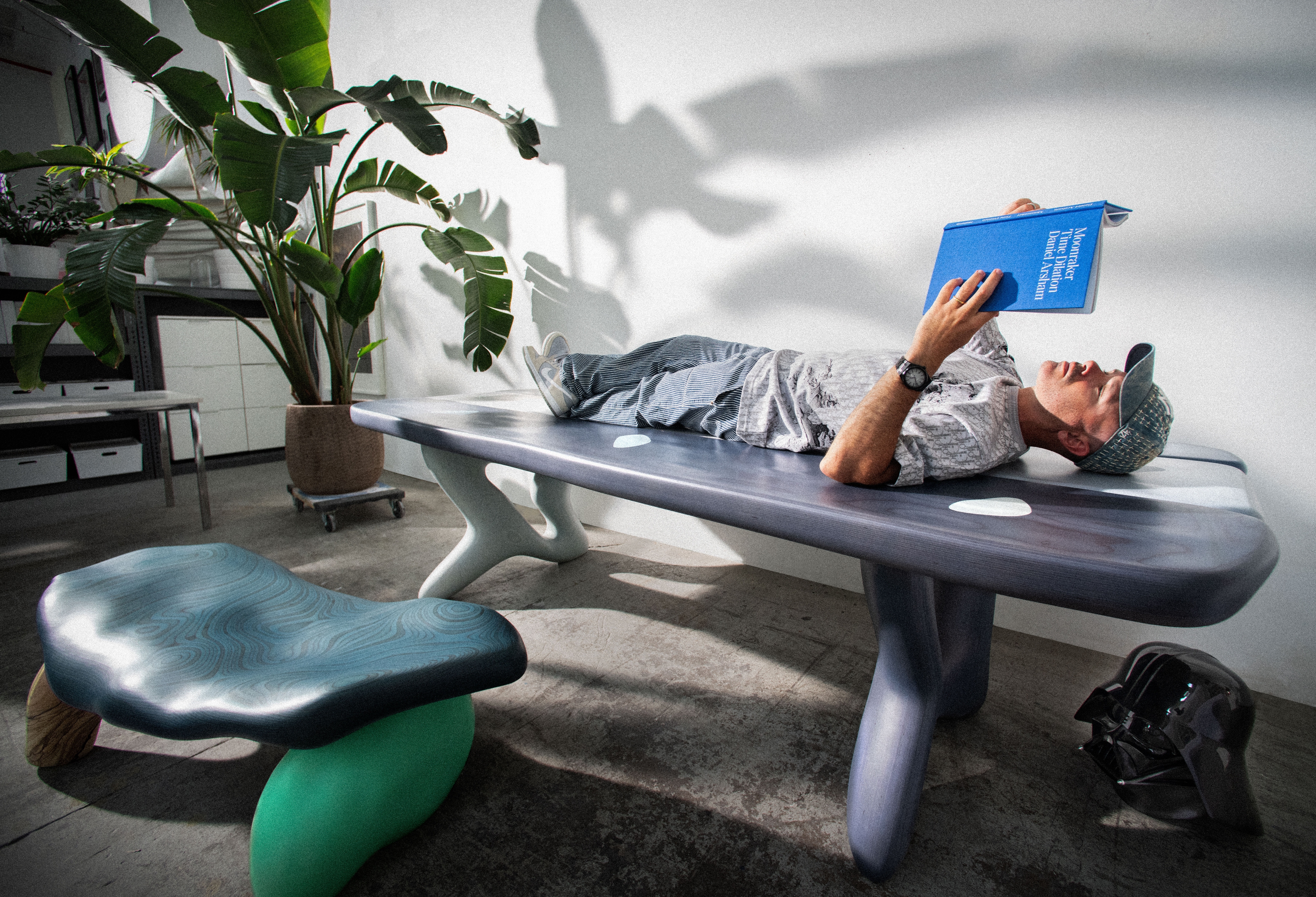
The prolific multimedia artist Daniel Arsham may be synonymous with his Future Relic series, which casts ubiquitous objects, such as Pokémon, supercars and sneakers, as historical artefacts, calcified, eroded and unearthed a thousand years from now. But it’s his new additions to a line of furniture that are currently stealing the limelight.
This follow-up effort was developed off the back of his debut furniture collection from 2019, Objects for Living, which the artist exhibited at Design Miami that year with New York design gallery Friedman Benda. It sees Arsham continue his exploration of structural, material and, of course, temporal contrasts in a truly functional form. The new pieces, which include lighting, a sofa, and a dining table and chair, are being presented as part of Arsham’s first solo show with Friedman Benda (until 25 September 2021).
Daniel Arsham furniture: Objects for Living
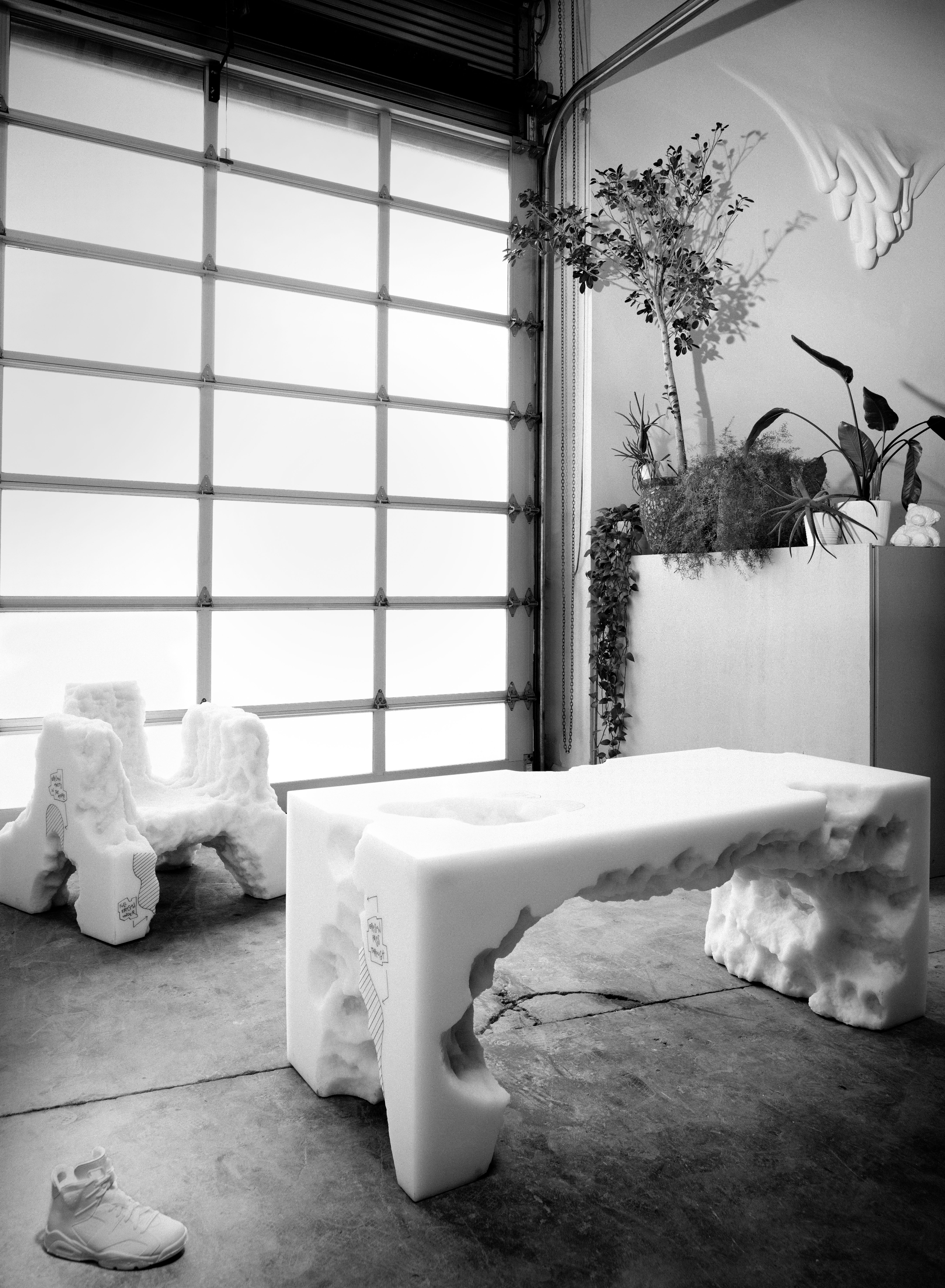
’Shanghai Chair’ and ’Jaffe Desk’, both made in resin and foam, from Daniel Arsham’s first ‘Objects for Living’ collection, presented at Design Miami in December 2019
Arsham’s foray into furniture design is no surprise. He studied design and architecture in high school in Miami, but then pivoted to art at the Cooper Union in New York after he wasn’t accepted into its architecture programme. Arsham’s long-standing interest in design continues to be evident in his involvement in Snarkitecture, the multidisciplinary practice he co-founded with Alex Mustonen in 2007. The firm is known for its pioneering spatial interventions and immersive experiences for celebrities, brands such as Cos and Lexus, and real estate developers including Related Companies and Central Group, often realised in its signature greyscale palette.
Objects for Living emerged from Arsham’s desire to create pieces to fit his weekend home on Long Island, a modest yet distinctive bungalow designed by American architect Norman Jaffe in 1971, which the artist acquired in 2017. Inspired by Jaffe’s juxtaposition of curves and angles, Arsham designed several armchairs, a desk, a floor lamp and a rug for his personal use within the house. This inevitably caught the eye of gallerist Marc Benda, who saw the merit of revealing this other facet of the artist’s practice to the public.

Arsham’s ‘Pebbles’ armchair in stone, resin and birch, from the ‘Objects for Living II’ collection, surrounded by: ‘Broken Mirror’ and ’Broken Bench’, both by Snarkitecture for Gufram, and Arsham’s Quartz Crystallised Large Charmander, from his solo exhibition ‘Time Dilation’ at Perrotin New York, 2021. On the ground is Arsham’s ’London Floor Plan’ rug, which depicts the floorplan of his 2019 installation with Friedman Benda at Design Miami
Although some of the pieces from the inaugural series subscribed to Arsham’s distinctive fossilised aesthetic, others took on more organic, assemblage-like forms, which is the direction Arsham has expanded in for this second iteration, a reflection of the extensive time he spent at the house with his young family during the pandemic, along with the types of pieces he wants to live with.
‘Most of the design for this happened during the lockdown in New York,’ Arsham recalls. ‘I had gone out to the house in early March and I didn’t really have a lot of materials or things there with me. I started sculpting with Play-Doh, which my boys had loads of, and started modelling different types of forms. I wasn’t thinking that those would be the final forms, but I let them dry and when we came out of lockdown, I ended up just getting them 3D-scanned.’
Each piece’s hand-formed components retain all the idiosyncrasies of sculpting in Play-Doh, from the rough edges and indentations on the back of an armchair to the organically-shaped legs of the dining table. Realised in a combination of wood, resin and stone, each sculptural piece has a naive, almost primitive appearance that taps into Arsham’s fascination with blurring and warping time, albeit without the usual archaeological overtones.
Materials and manufacturing techniques
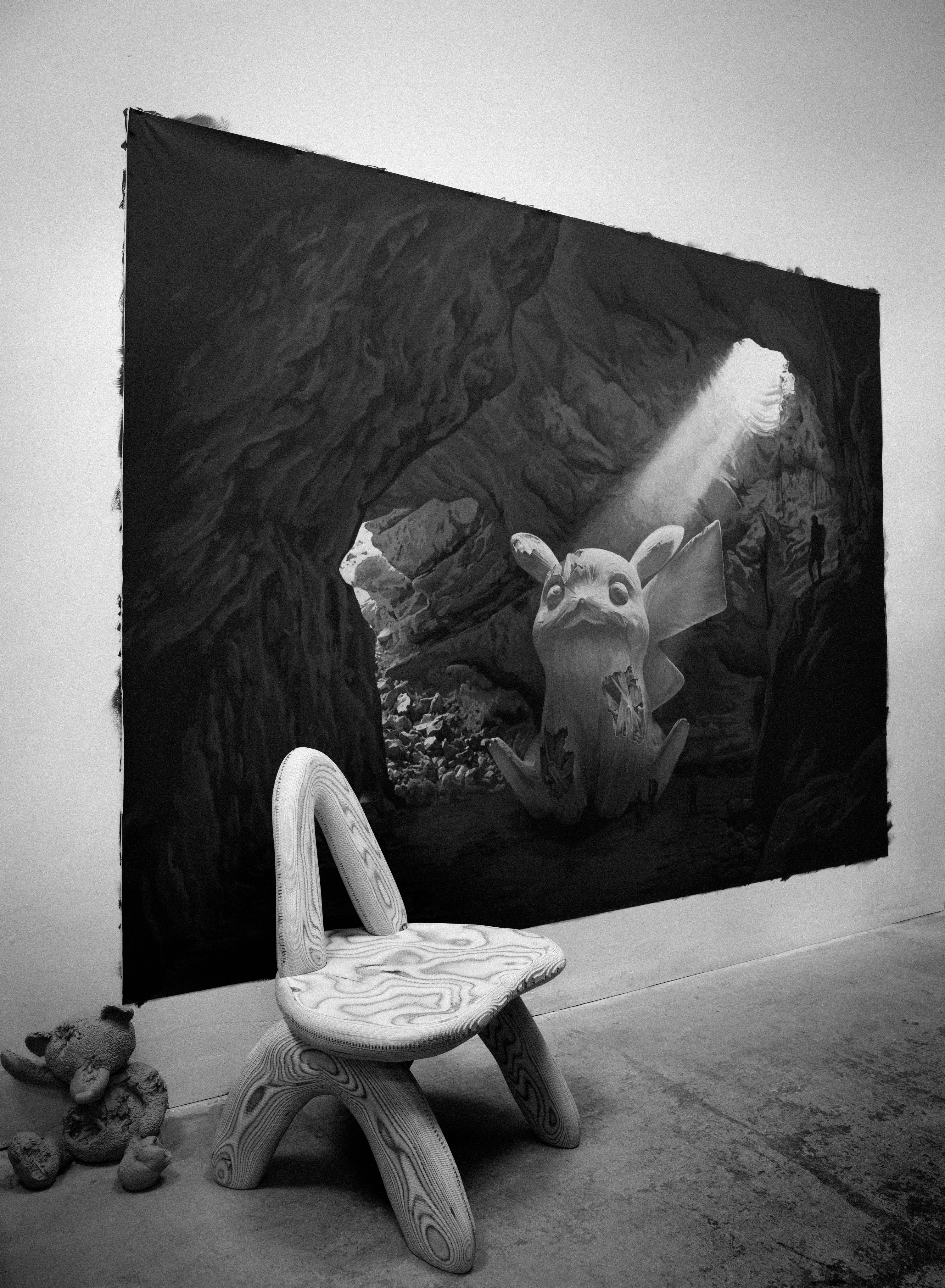
‘Dino’ Dining Chair, in birch, from the ‘Objects for Living II’ collection. On the left is Arsham’s Teddy Bear, in pyrite and selenite
‘There’s a material difference between the two collections. Most of the first collection was [made from] resin and sculpted digitally,’ explains Arsham. The new pieces express ‘a material transformation. There are pieces that are solid stone, solid resin and then hollow resin, where you see the light push through it. There’s also this wood technique that we’ve been using in the studio that gives all of these amazing patterns.’
‘I want these things to actually be used. They’re not sculptures that won’t be touched’
Daniel Arsham
Deployed on the seat of a chair, for example, the technique produces a boisterous wood grain that mirrors the topography of the sculpted wood. ‘I achieve this variation by laminating the plywood, tilting the whole thing on an axis, then milling it as if it was flat,’ he says. ‘Once you start milling, you get these patterns that are impossible to predict because of the angle of the grain.’
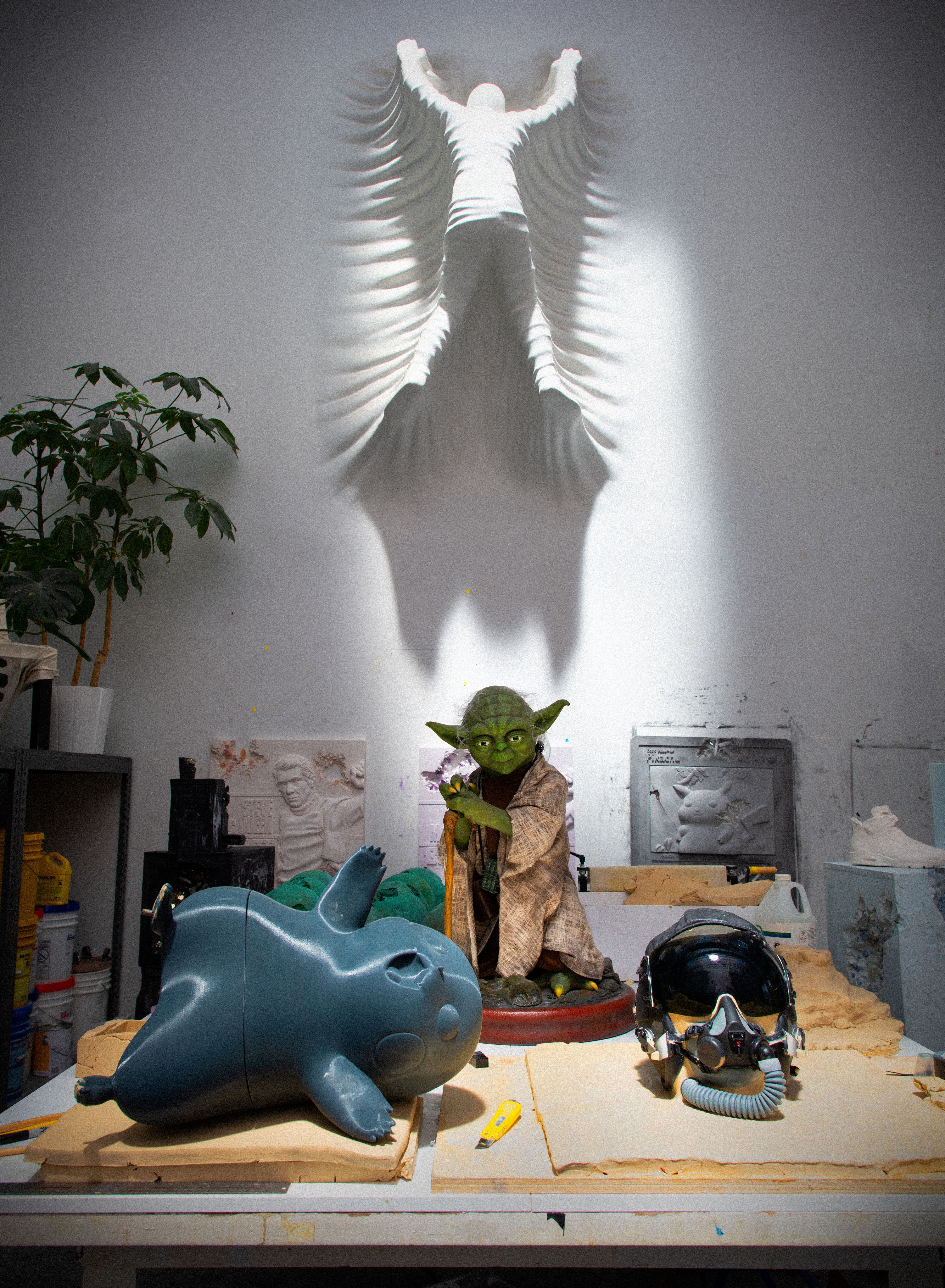
A detail of Arsham’s studio
Visual appeal aside, Arsham has also focused on the comfort and practicality of each piece, inspired by the balancing of form and function in Wendell Castle’s ‘Triad’ chair (2006), which sits in his studio. ‘I usually start with the chairs because they are the most generic form. Once I had everything sculpted, we milled it in foam and then I changed the scale and pitch of things for ergonomics so that it actually feels comfortable,’ he says. ‘When you sit in the armchair, your body fits in it correctly. I want these things to actually be used. They’re not sculptures that won’t be touched.’
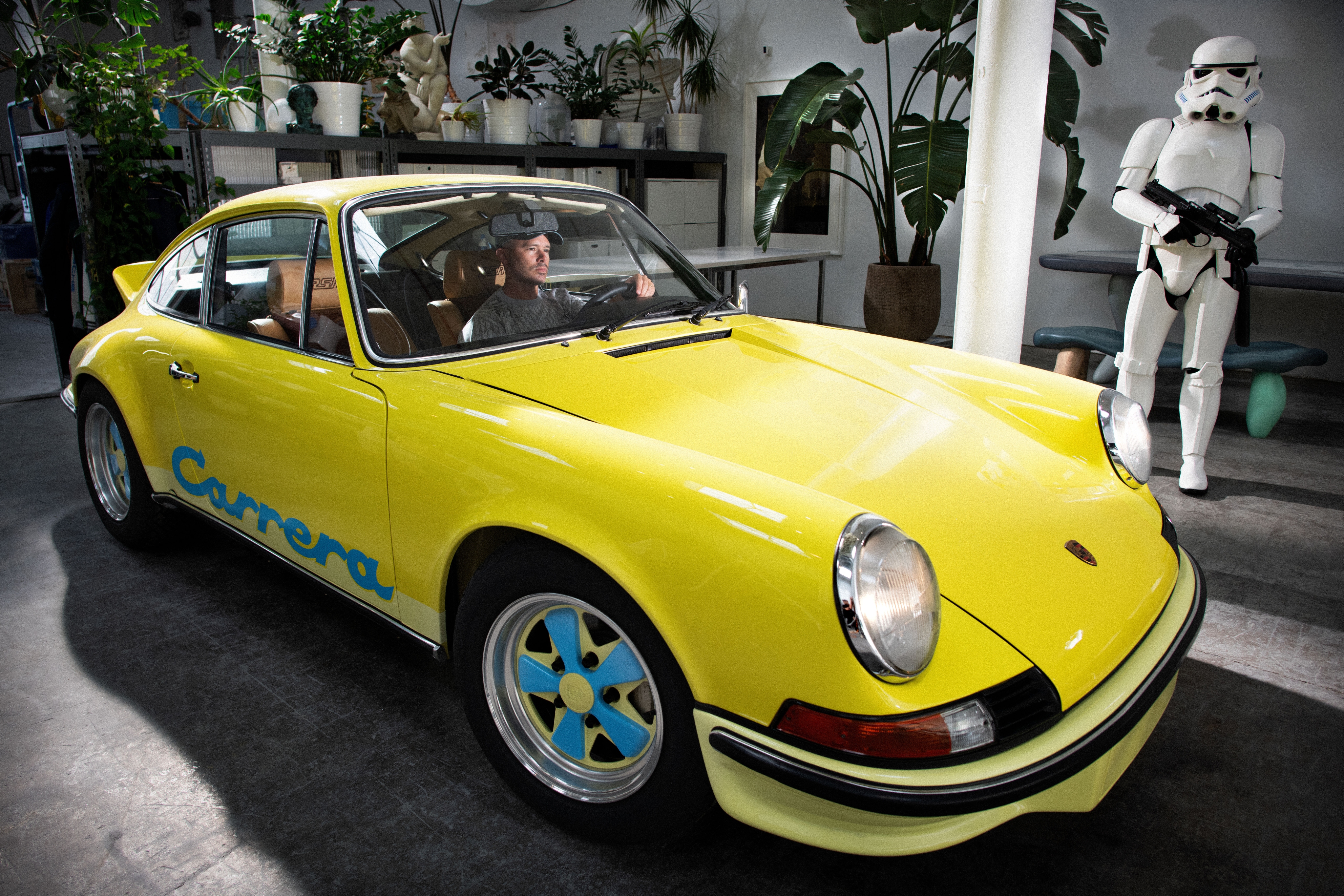
Arsham in his studio, with his custom 1973 Porsche RSA – given pale yellow bumpers reminiscent of RSR race cars of the era, and with side text vinyl showing ’Arsham’ on the driver side and ’Carrera’ on the passenger side. The car also features custom rims and centre caps on Pirelli tires, a bespoke bronze grill grate in Arsham’s monogram, and a chocolate brown corduroy interior
A highlight of the new ten-piece collection is an ambitious bed frame, which Arsham conceived for the Brooklyn brownstone that he purchased last autumn. ‘I still just have a mattress on the floor because I’m waiting to finish this bed,’ he laughs. ‘Every single thing that I want in a bed is in this, from the storage underneath to the charging ports and reading lamps; it has underlight, it has backlight and a task light. The way the light feels is based on different conditions.’ Some details were inspired by Arsham’s stays at hotels in Asia: ‘There’s a small bench on the end of it that you can sit on if you’re putting your socks on. It’s a very whimsical design.’
Wallpaper* Newsletter
Receive our daily digest of inspiration, escapism and design stories from around the world direct to your inbox.
With a headboard formed by individual organic shapes, the asymmetrical bed facilitates an interplay of light and shadow that transforms it into a sculptural art piece. ‘The wall that it will sit on doesn’t need anything else. I don’t have to put an artwork on the wall because the bed becomes that,’ Arsham adds. Completed with recessed drawers that are concealed from view, nightstands on either side that are integrated into the overall form, and reading lights that can be tucked away, the low bed frame cuts a strong yet seductive figure.
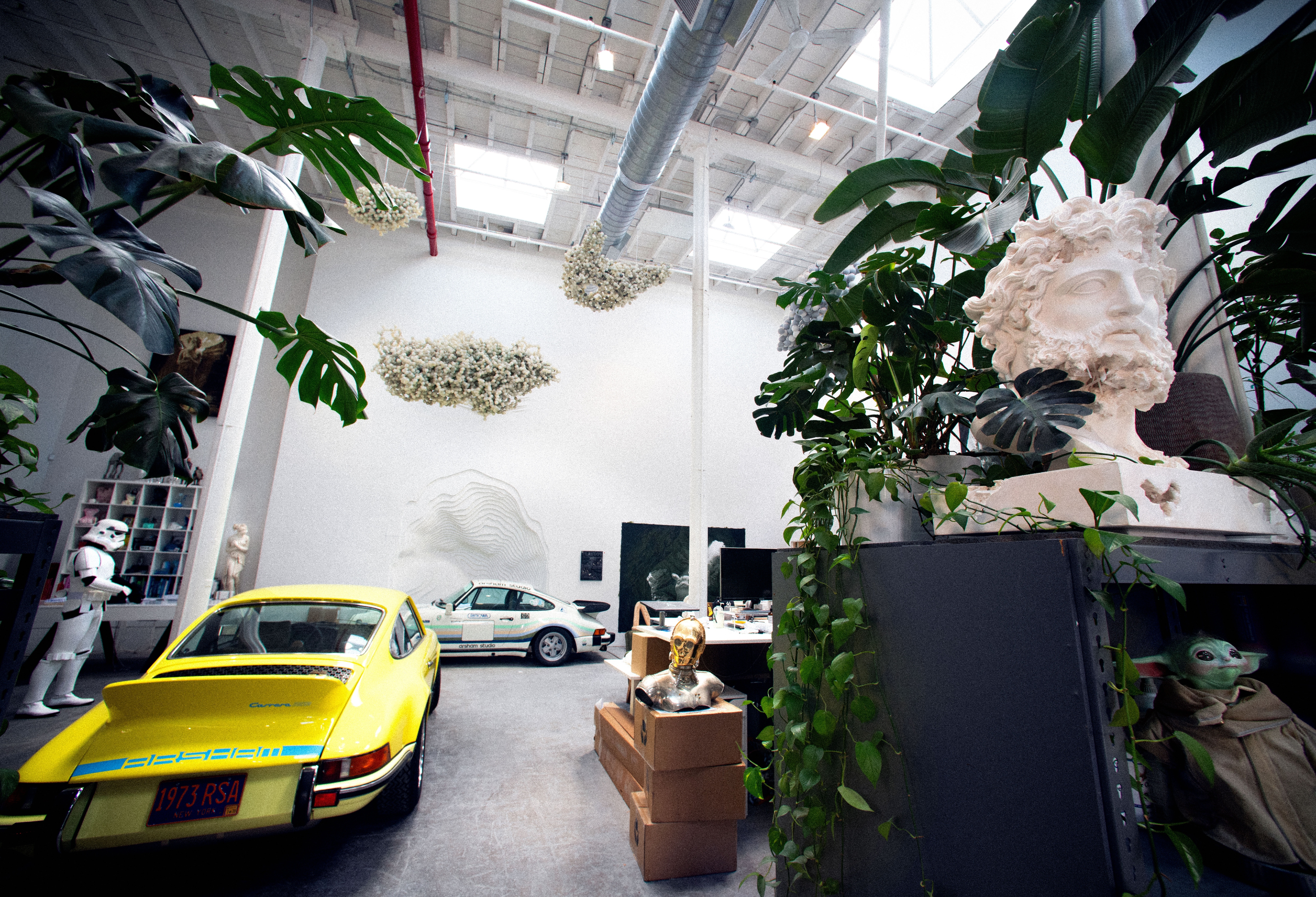
Arsham’s studio, featuring a rose quartz eroded bust of Zeus (right), and pieces from his 2011 installation ’Pixel Clouds’, created from hand-dyed ping pong balls for Merce Cunningham Dance Company’s performances at the Park Avenue Armory that year
‘As abstract as some of the first designs were, I shaped the pieces to fit the body perfectly, even if they looked like the most uncomfortable things ever. There’s a counterintuitive thing you can have with furniture,’ Arsham explains. ‘With artwork, sometimes the visual quality of the thing is different from what it makes you feel or what it means. With furniture, or design objects that you actually touch, there’s a different level of possibility in the contrast between how it looks and feels. Even though this collection has things that are very playful, I really spent a lot of time on the ergonomics, to make sure they work for what they’re supposed to do. Every single thing that I’ve designed furniture-wise, I designed it with the intention of using it.’
INFORMATION
‘Daniel Arsham: Objects for Living: Collection II’ runs until 25 September 2021 at Friedman Benda, New York
friedmanbenda.com
danielarsham.com
ADDRESS
515 W 26th Street
New York
NY 10001
USA
Pei-Ru Keh is a former US Editor at Wallpaper*. Born and raised in Singapore, she has been a New Yorker since 2013. Pei-Ru held various titles at Wallpaper* between 2007 and 2023. She reports on design, tech, art, architecture, fashion, beauty and lifestyle happenings in the United States, both in print and digitally. Pei-Ru took a key role in championing diversity and representation within Wallpaper's content pillars, actively seeking out stories that reflect a wide range of perspectives. She lives in Brooklyn with her husband and two children, and is currently learning how to drive.
-
 All-In is the Paris-based label making full-force fashion for main character dressing
All-In is the Paris-based label making full-force fashion for main character dressingPart of our monthly Uprising series, Wallpaper* meets Benjamin Barron and Bror August Vestbø of All-In, the LVMH Prize-nominated label which bases its collections on a riotous cast of characters – real and imagined
By Orla Brennan
-
 Maserati joins forces with Giorgetti for a turbo-charged relationship
Maserati joins forces with Giorgetti for a turbo-charged relationshipAnnouncing their marriage during Milan Design Week, the brands unveiled a collection, a car and a long term commitment
By Hugo Macdonald
-
 Through an innovative new training program, Poltrona Frau aims to safeguard Italian craft
Through an innovative new training program, Poltrona Frau aims to safeguard Italian craftThe heritage furniture manufacturer is training a new generation of leather artisans
By Cristina Kiran Piotti
-
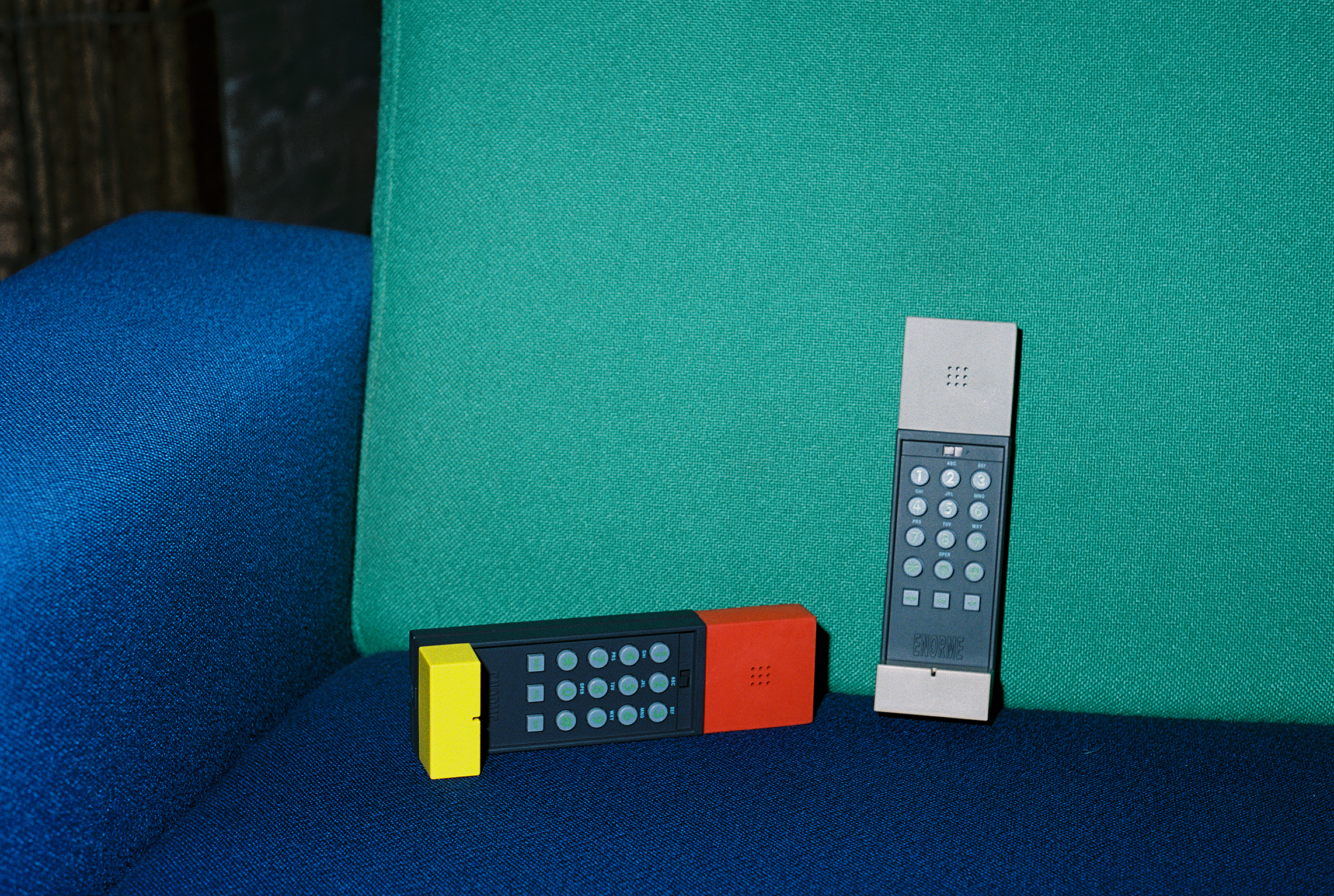 Basic.Space launches its first IRL shopping event – in an empty West Hollywood mall
Basic.Space launches its first IRL shopping event – in an empty West Hollywood mallWith the launch of its first in-person event in LA this weekend, the e-commerce platform is looking to bring collectible design to a whole new audience
By Adrian Madlener
-
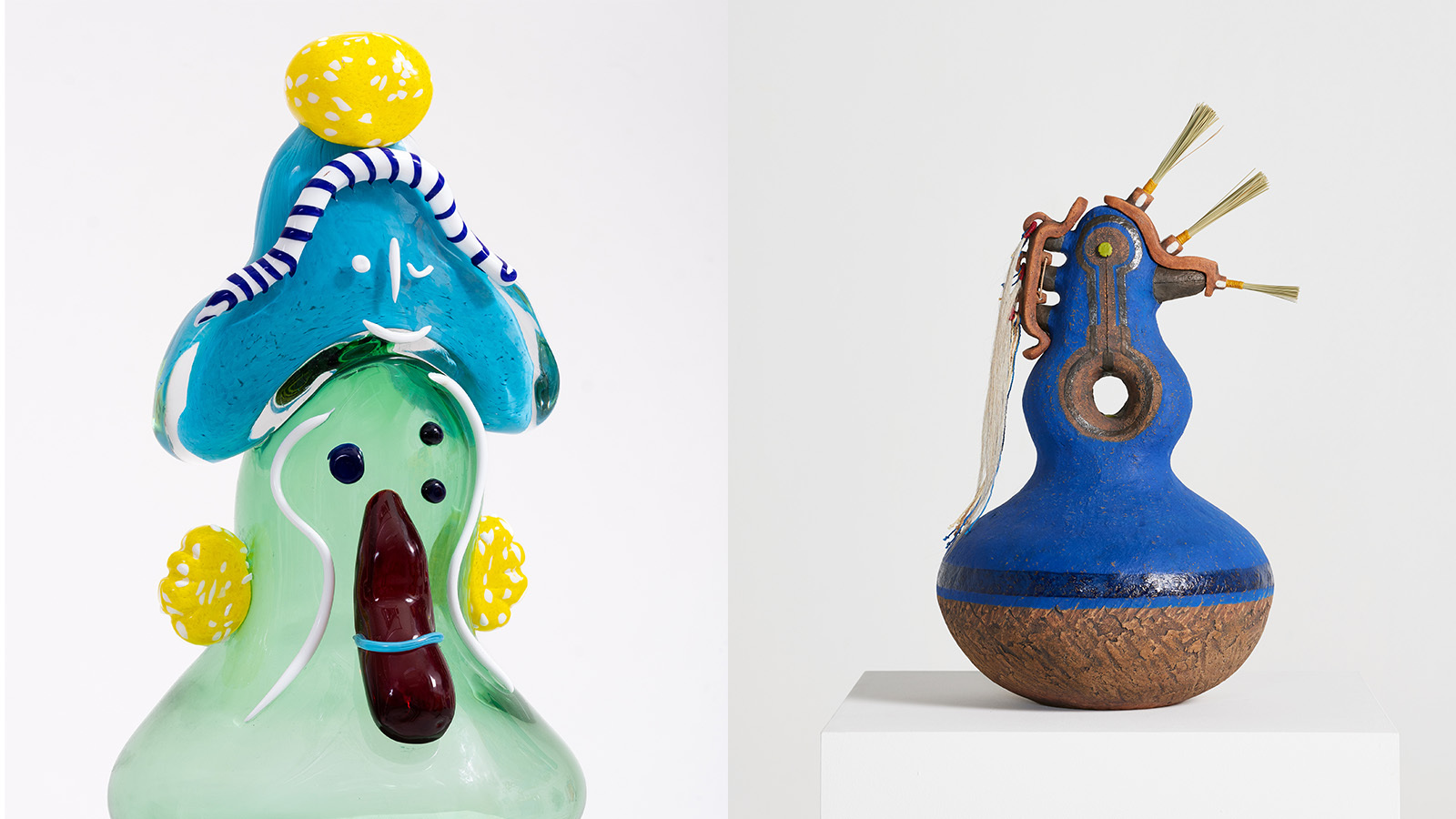 Design Miami 2024 is alive with possibility: here are 14 things to see
Design Miami 2024 is alive with possibility: here are 14 things to seeDesign Miami 2024 opens 4-8 December – let Wallpaper* guide you to the highlights, from dazzling installations to plump sofas and anthropomorphic sculptures
By Ali Morris
-
 Nendo’s collaborations with Kyoto artisans go on view in New York
Nendo’s collaborations with Kyoto artisans go on view in New York‘Nendo sees Kyoto’ is on view at Friedman Benda (until 15 October 2022), showcasing the design studio's collaboration with six artisans specialised in ancient Japanese crafts
By Pei-Ru Keh
-
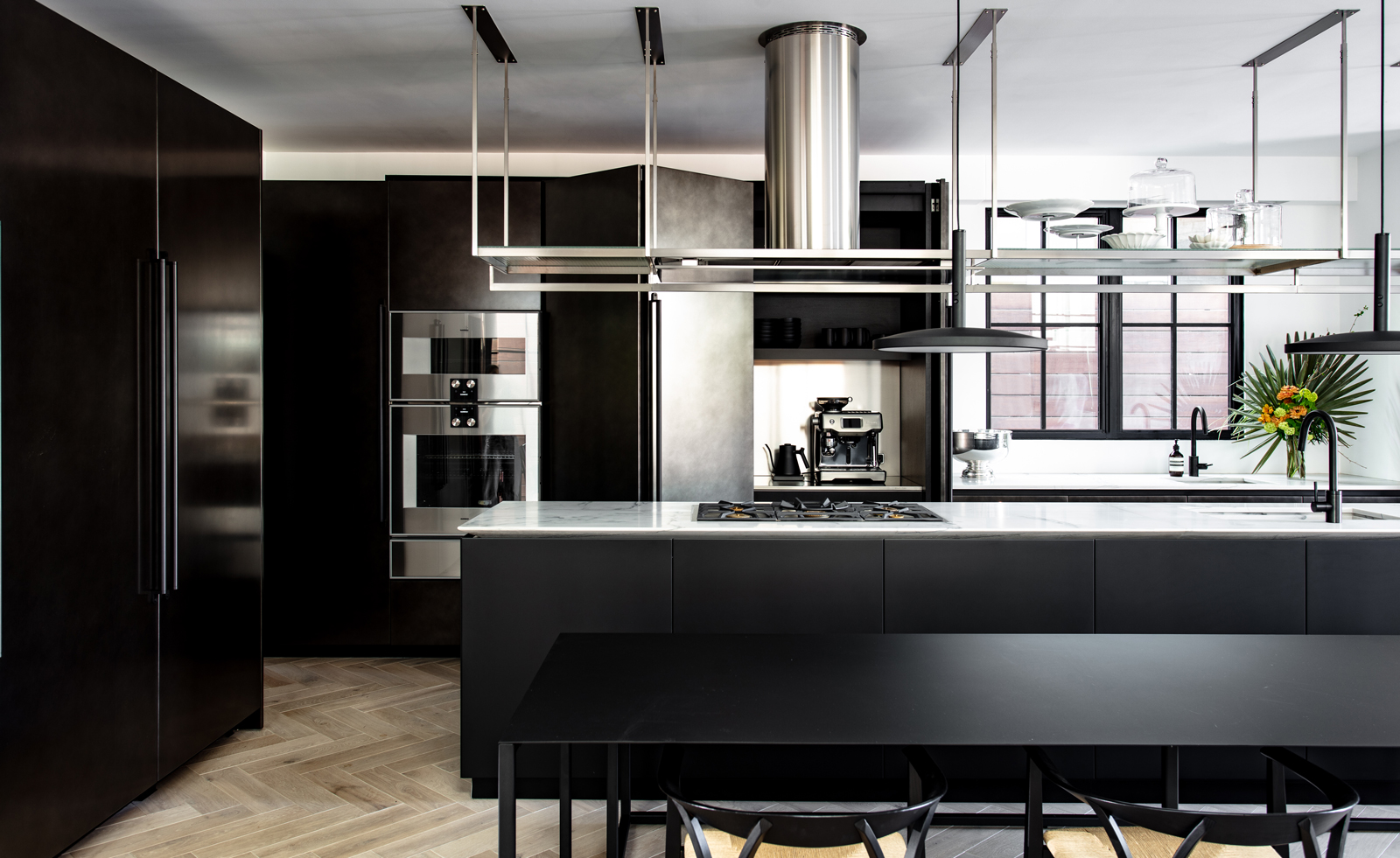 Italian craftsmanship comes to Los Angeles in this eclectic Venice Canals apartment
Italian craftsmanship comes to Los Angeles in this eclectic Venice Canals apartmentBoffi Los Angeles celebrates a juxtaposition of texture throughout a waterside bolthole
By Hannah Silver
-
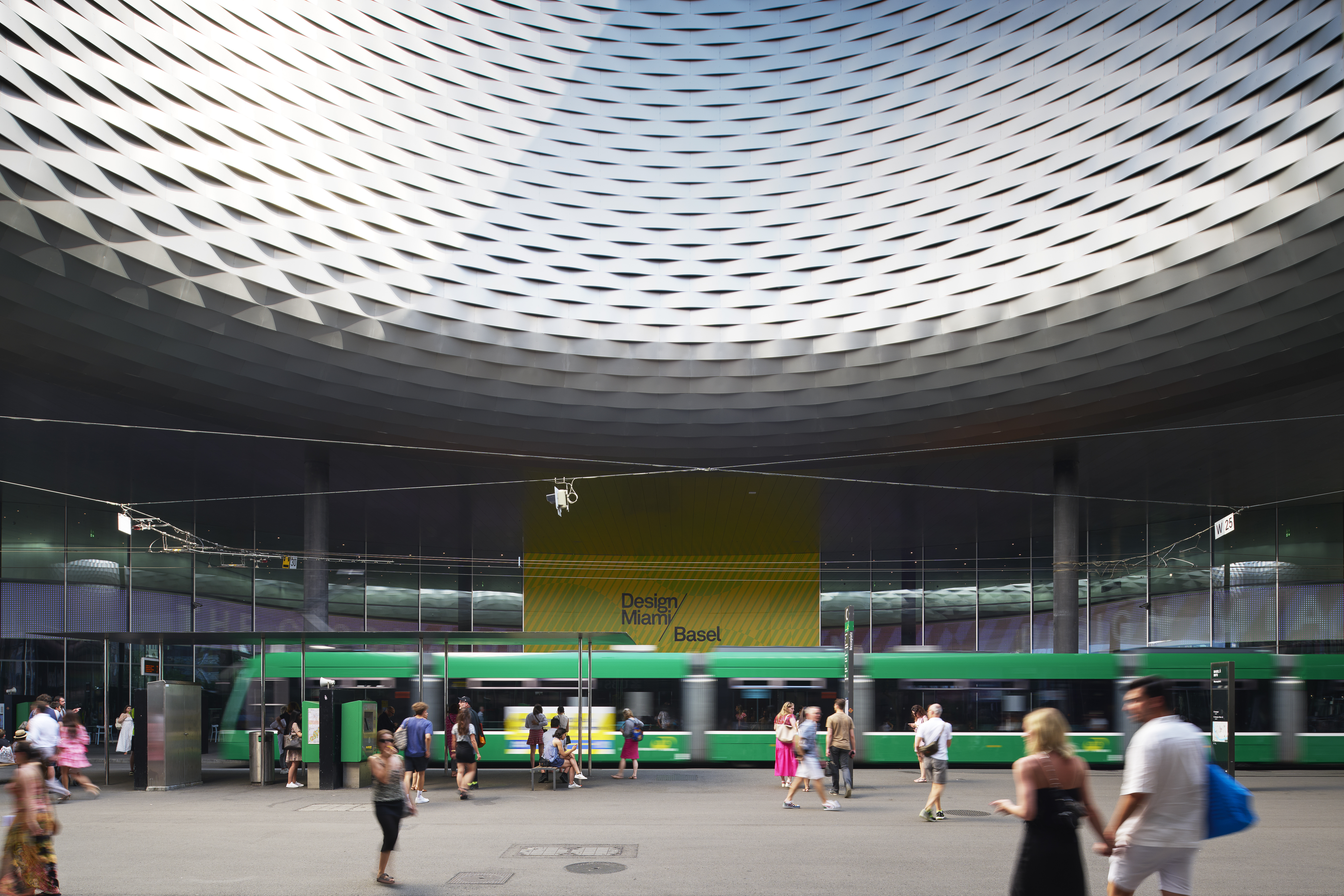 Design Miami/Basel 2022 explores the Golden Age
Design Miami/Basel 2022 explores the Golden AgeDesign Miami/Basel 2022, led by curatorial director Maria Cristina Didero, offers a positive spin after the unprecedented times of the pandemic, and looks at the history and spirit of design
By Rosa Bertoli
-
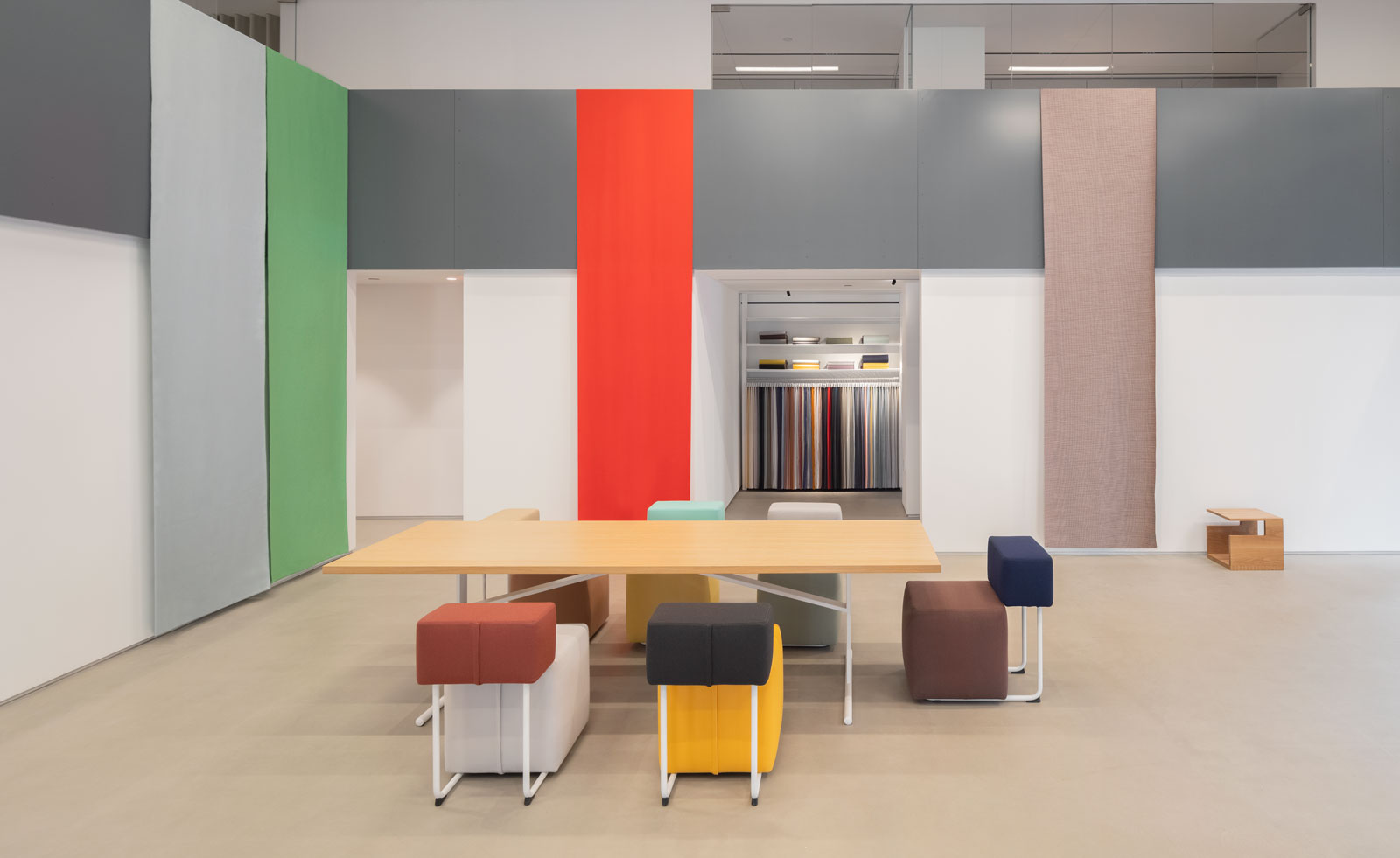 Kvadrat’s flagship New York showrooms encompass colourful design codes
Kvadrat’s flagship New York showrooms encompass colourful design codesIndustrial designer Jonathan Olivares and architect Vincent Van Duysen have worked with Danish textile brand Kvadrat on the vast new space, also featuring furniture by Moroso
By Hannah Silver
-
 What to see at New York Design Week 2022
What to see at New York Design Week 2022Discover Wallpaper’s highlights from New York Design Week 2022 (10 – 20 May 2022): the fairs, exhibitions and design openings to discover
By Pei-Ru Keh
-
 Colour defines LA ceramics studio and showroom of Bari Ziperstein
Colour defines LA ceramics studio and showroom of Bari ZipersteinStep inside the multifunctional ceramics studio, office and showroom of designer and artist Bari Ziperstein, designed by local firm Foss Hildreth
By Pei-Ru Keh